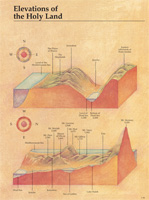On our 44th wedding anniversary we made a family history trip to two places in Doug's family history.
This is the Auld Grey Kirk on the Hill. It was built in 1640 as a one story church and stands on a hill overlooking the village. It is 600' above sea level and you can see 60 miles to the west. The church was rebuilt in 1777 as a two story and that is why the steeple is hardly noticeable. The name for the church comes from the discoloration of the stones of the building because of smoke and fumes from nearby heavy industry. Now that the industry is long gone, the building has reverted back to the original stone color.
Agnes Jamieson and Walter Hoggan were married in this church 18 July 1851. The church was locked so will have to wait for another time to look inside.
The graveyard around the church.
We went the graveyard next to the church and found Sandy who was the Sextant. He opened his book of records, what a priceless collection. I was almost afraid to touch the pages they were so old. We found a George and Walter Jamieson who had bought a plot in the cemetery but had subsequently sold it to some others. This is the record.
Then he found the record of the church graveyard with names on each plot.
Dunfermline was founded in 1065 when King Malcom built his Tower on a hill. It is Scotland's ancient capital.
Walter and Agnes Hoggan lived in Dunfermline when they had four children. They lived on Knobbie Street, which we drove on today, however they have excavated the street and buildings and even a church to make way for a shopping mall and car park.
Dunfermline Abbey is one of the most important of the Scottish Abbeys from the 12th century to Reformation times in Scotland. It was built by David 1. It is the burial place of Scottish Kings, Queens, Princesses, and Princes including the greatest of the Scottish Kings--King Robert the Bruce who was the victor of the Battle of Bannockburn in 1314. His heart was removed to be taken to the Holy Land as he had wished. It never made it and now lies in Melrose Abbey.
This would have been the great hall where the monks would have eaten all of their meals in complete silence. Nods of the head and eye movement allowed food to be passed.
No pictures inside as it was locked as well. :{
Dunfermline is also the home of Andrew Carnegie who gave away $350 million dollars during his lifetime. He was the son of a weaver who was born in 1835 and emigrated to the US at the age of 12. He began his career as a bobbin boy in a factory. He made his fortune investing in iron and steel and became the world's richest man and at 33 gave much of his wealth away to benefit mankind. His museum is free to the public but only open March to November.







































